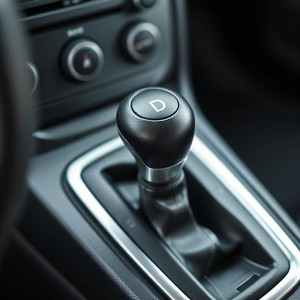When it comes to vehicles, transmissions, and driving technology, the term “Automatic D” often comes into the discussion. For many drivers, especially those using cars with automatic transmissions, the “D” gear is a familiar sight on the gear shift. However, while it might seem straightforward, there is much more to Automatic D than meets the eye. This article will explore what Automatic D means, its role in driving, the mechanics behind it, safety considerations, advantages, disadvantages, and some commonly asked questions.
Table of Contents
What Does Automatic D Mean?
The “D” in Automatic D stands for Drive. In vehicles with automatic transmissions, placing the gear shift in “D” allows the car to move forward without the driver needing to manually shift gears. Unlike manual transmissions, where gears must be changed manually with a clutch, automatic transmissions shift gears automatically as the car accelerates or slows down.
Essentially, when the driver selects Automatic D, the vehicle takes over gear management, adjusting engine power and wheel speed for smooth driving.
How Automatic D Works
Automatic transmissions rely on hydraulic systems, sensors, and computer controls. Here’s how the process works in Automatic D mode:
- Gear Engagement – Once the gear lever is moved to “D,” the transmission engages forward gears.
- Sensors and Engine Control – Sensors monitor speed, throttle position, and driving conditions.
- Automatic Shifting – Based on inputs, the system automatically shifts between gears (e.g., first, second, third, etc.).
- Torque Converter Role – Instead of a clutch, automatic cars use a torque converter, which transfers power from the engine to the transmission smoothly.
This seamless gear transition makes Automatic D user-friendly and especially convenient in heavy traffic.
Why Automatic D Matters
Automatic D is more than just a gear setting; it represents the evolution of driving. Here’s why it matters:
- Ease of Driving – No need for clutch or manual gear shifting.
- Traffic Convenience – Reduces fatigue in stop-and-go traffic.
- Accessibility – Ideal for beginners, elderly drivers, or those with physical limitations.
- Technological Integration – Modern Automatic D settings often work alongside advanced driving aids like cruise control, adaptive braking, and electronic stability systems.
Differences Between Automatic D and Other Gears
It is essential to understand how Automatic D differs from other transmission positions:
- P (Park): Locks transmission and prevents movement.
- R (Reverse): Engages reverse gear for moving backward.
- N (Neutral): Disconnects engine power from wheels, used during idling.
- D (Drive): Moves the car forward and shifts gears automatically.
- L (Low) or S (Sport): Used for more power or engine braking, often in steep terrain or high-performance situations.
Automatic D is the most commonly used gear since it handles most driving situations with minimal input from the driver.
Advantages of Automatic D
- User-Friendly – Easier for new drivers.
- Less Fatigue – Reduces strain in urban traffic.
- Smooth Ride – Automatic shifting creates a seamless driving experience.
- Advanced Features – Works well with modern car technologies.
- Safer for Many Drivers – Helps prevent stalling and rolling backward on slopes.
Disadvantages of Automatic D
- Less Control – Some drivers prefer manual gear control.
- Fuel Efficiency Concerns – Older automatic systems consume more fuel than manual ones (though modern systems are more efficient).
- Higher Maintenance Costs – Repairs and replacements for automatic transmissions are usually more expensive.
- Not Ideal for Extreme Conditions – In some terrains, manual control provides better handling.
Safety Considerations with Automatic D
While Automatic D makes driving simpler, safety should never be overlooked:
- Always Use Brake When Shifting: Never shift into D without pressing the brake.
- Avoid Shifting While Moving: Switching from R to D or vice versa while the car is in motion can damage the transmission.
- Use P for Long Stops: At long traffic signals, you can stay in D with your foot on the brake, but for extended stops, use P.
- Understand Engine Braking: Automatic D does not provide strong engine braking on steep slopes—use “L” or “S” instead.
Automatic D in Modern Vehicles
Modern vehicles are integrating Automatic D with advanced systems such as:
- CVT (Continuously Variable Transmission): Offers a smoother version of Automatic D with infinite gear ratios.
- Dual-Clutch Transmission (DCT): Provides faster gear shifts while keeping the automatic feel.
- Hybrid and Electric Cars: Automatic D works differently since there are no traditional gears, but the principle remains the same—“D” engages forward motion.
The Future of Automatic D
As vehicles become more advanced, the concept of Automatic D is evolving:
- Self-Driving Cars: Automatic D will be linked with autonomous driving systems.
- Energy Efficiency: Future Automatic D modes will be optimized for better fuel economy and electric vehicle range.
- Smart Gear Management: Integration with AI to predict driving patterns and adjust shifts accordingly.
Conclusion
The Automatic D gear is more than just a simple transmission setting—it represents decades of innovation in automotive technology. By making driving smoother, safer, and more convenient, it has transformed the way people interact with vehicles. Whether you are a new driver or an experienced one, understanding how Automatic D works helps you appreciate its role in modern driving and use it more effectively.
FAQs About Automatic D
Q1: Can I start my car in Automatic D?
No, cars typically only start in Park (P) or Neutral (N) for safety reasons.
Q2: Is it okay to stay in D while waiting at a signal?
Yes, but for long stops, shifting to P is recommended.
Q3: Can Automatic D damage my car if misused?
Yes. Rapidly shifting between R and D while moving can harm the transmission.
Q4: Is driving in Automatic D fuel-efficient?
Modern automatic transmissions are quite fuel-efficient, though results depend on driving style and vehicle type.
Q5: What’s the difference between D and S in automatic cars?
“D” is for regular driving, while “S” (Sport) provides higher performance and power.

